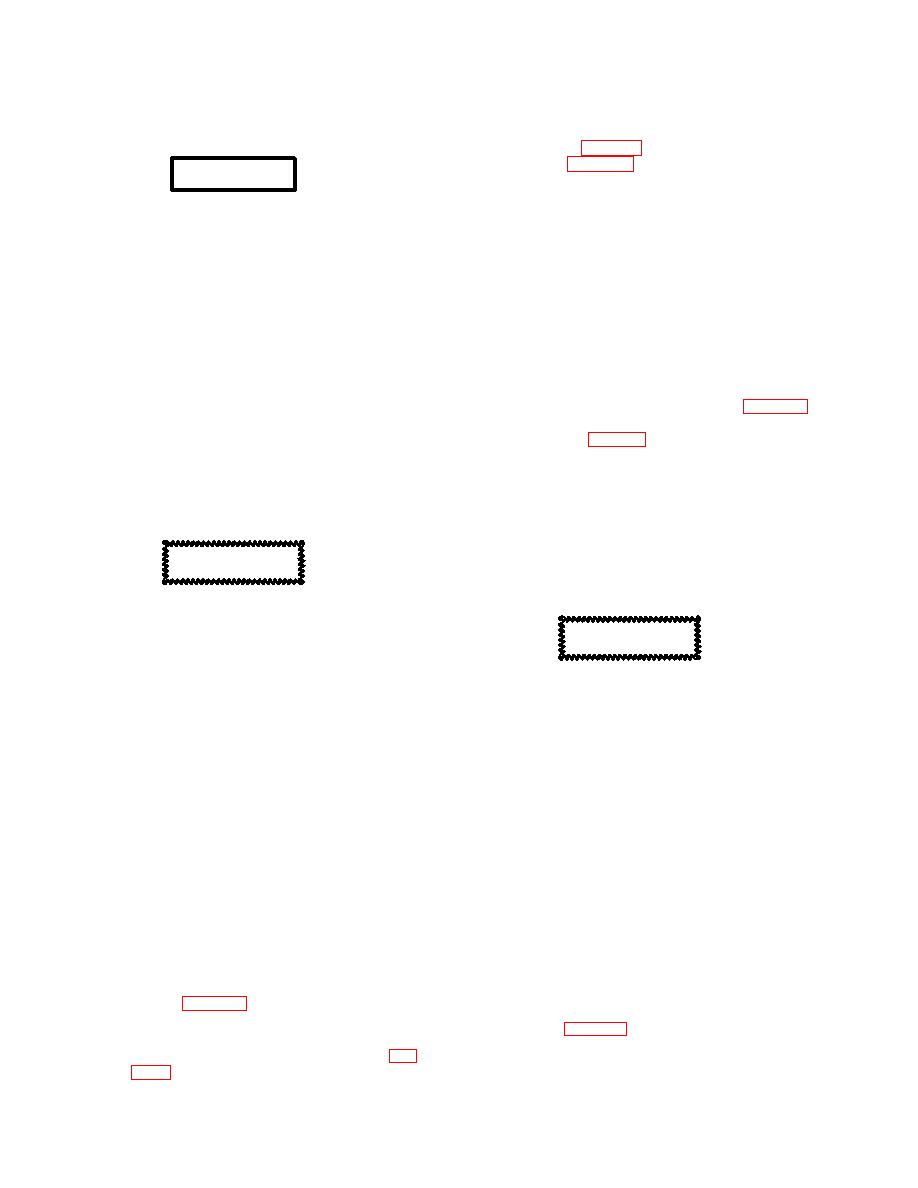 |
|||
|
|
|||
|
Page Title:
Load First Helicopter Nose First. |
|
||
| ||||||||||
|
|
 TM 55-1520-238-S
c. Install Tail Wheel Steering Bar and
239 HELICOPTER LOADING AND TIEDOWN
Winching Yoke. Connect winching yoke
(MAXIMUM DENSITY (LOGISTICAL) SHIPMENT.
(item 8, table 21) to tail landing gear wheel
fork (fig. 214). Tighten yoke studs onto
WARNING
ends of tail wheel axle. Install steering bar
in yoke tube.
To prevent fire, explosion, or weap-
on discharge, verify that armament,
NOTE
canopy jettison, fuel, and electrical
Tail wheel steering bar will be used to
systems are safe on each helicopter
steer helicopter and to keep main and tail
prior to loading.
wheels on loading ramps.
To prevent injury to personnel and
d. Aline Helicopter at Shoring. Position
damage to helicopter and cargo air-
helicopter with main landing gear to aline
craft, the helicopter will be re-
with approach shoring.
strained with chains and wheel
e. Connect Cargo Aircraft Winch Cable to
chocks prior to releasing tension on
Helicopter. Couple hooks on forward
the winch cable.
winching adapter cable (item 7, table 21)
To prevent injury to personnel and
to helicopter main wheel arm inboard tow-
damage to helicopter and cargo air-
ing eyes (fig. 215). Cargo aircraft load-
craft in the event of winch failure,
master will direct coupling of the forward
the helicopter CPG station will be
winching adapter cable to cargo aircraft
occupied by a qualified person to
winch cable and take up cable slack.
operate brakes.
f. Assign Personnel. Assign loading team
members to monitor ramp crest, overhead
and sidewall clearances, operate tail wheel
CAUTION
steering bar, and operate helicopter
brakes.
To prevent damage to helicopter
and cargo aircraft, chocks shall be
CAUTION
used to prevent the helicopter from
moving past the required cargo air-
craft fuselage station.
As helicopter moves up the ramp
nose first, under-belly clearance is
To prevent damage to helicopter
critical.
and cargo aircraft, ensure that rotor
head and tail rotor are properly
The first critical clearance encoun-
positioned prior to approaching
tered will be the gun cage to ramp
cargo aircraft.
clearance. Adjust shoring under
main wheels as required to maintain
To prevent damage to helicopter
clearance.
and cargo aircraft, use shoring as
necessary under helicopter main
The second critical clearance is the
and tail wheels to provide clearance
dopler antenna fairing to the ramp
between helicopter underbelly and
crest. Maintain clearance by raising
cargo aircraft ramp hinge.
cargo aircraft ramp (after helicopter
tail wheel is firmly on ramp).
239.1 Load First Helicopter Nose First.
g. Winch Helicopter. Winch helicopter
a. Place Approach Shoring. Place the built
onto approach shoring and up cargo ramp.
up shoring or the prefabricated ramps un-
Stop helicopter when the main wheels are
der the ramp toes as shown for nose first
firmly on the ramp. Raise ramp to allow
load. Position secondary approach shoring
adequate ramp crest clearance. Continue
ramps (fig. 239).
winching until the helicopter is in final posi-
b. Unlock Tail Wheel Swivel. Push swivel
tion. (fig 242).
lock lever down to release tail wheel swivel
h. Apply Brakes. Apply helicopter brakes
lock. Install tail wheel lock safety pin (fig.
and place chocks.
294
Change 4
|
|
Privacy Statement - Press Release - Copyright Information. - Contact Us |